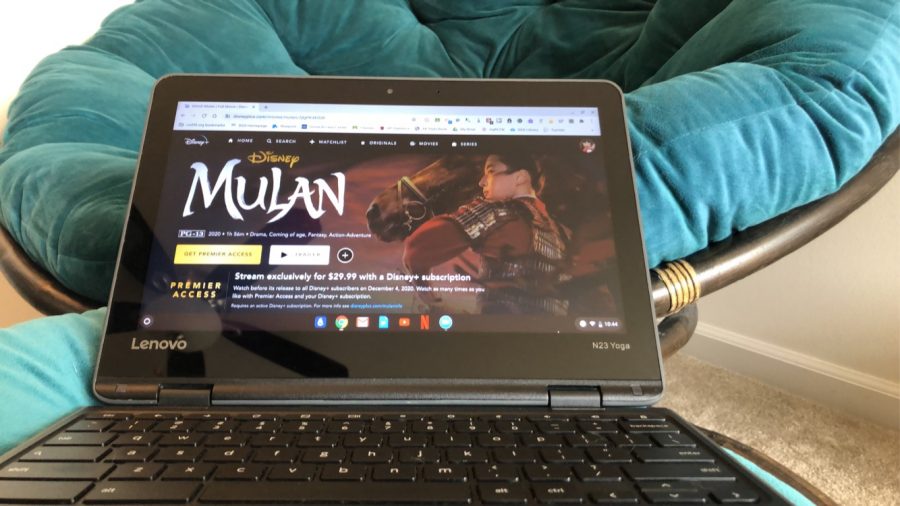This ‘Reflection’ isn’t a good one: Everything wrong with ‘Mulan’
You can buy and stream the film for $29.99 on Disney+ .
“Mulan” — one of the most anticipated Disney live action films that quickly and rightfully went down the drain was released on Sept. 4, 2020 and streaming on Disney+. “Mulan” costs viewers a questionable price of $29.99–after you’ve shaved out an extra seven for the membership. And that’s not the only thing that’s controversial about the film, as nearly every aspect of the film is problematic.
Disguised as a man, Mulan joins the army in place of her old, sad and injured father. She learns discipline, how to fight and shows up all the men at her training camp. When her gender is eventually revealed and she faces ultimate disgrace, Mulan chooses to fight as a woman and becomes a hero to the emperor and China.
You would think that with a plot like that the filmmakers of the live action would have plenty of ideas to expand on with the 22 years they had since the first movie was born. But the new “Mulan” had a disappointing script where there really wasn’t much talking, cheesy fight scenes and the cast had accents that ranged from the overused stereotypical East Asian to what I can only describe as a British accent. The weak script made Hua Mulan a really passive character, which is nothing like the strong woman she was portrayed as in the original.
While watching the film, the only thing I had interest in was the beautiful locations they filmed in — and even that couldn’t help but be problematic. In the credits, Disney thanks Chinese institutions that helped with the film, four in particular that are located in the region of Xinjiang and the Public Security Bureau of Turpan. These organizations have been facilitating putting more than a million Muslims into concentration camps; basically, Disney worked in regions where genocide is happening and then thanked them… how lovely.
Even the star of the movie, Liu Yifei couldn’t help but show her true colors on social media as her words sparked a trend called #BoycottMulan. Even though a naturalized American citizen, Yifei praised the Hong Kong police amid protests where they used excessive force and violence on protestors who were pro-democracy. Yikes.
It’s no doubt that “Mulan” was a monumental film in terms of Asian representation in the American film/media industry as an all Asian cast is unheard of. However, the film and production crew is nearly all white including: the director, costume designer, screenplay writers, composer, cinematographer, casting director and more. The original had more female Asian writers than the remade, “woke” version does.
As an Asian American, this was disappointing. The past few years have been full of racial movement and change, yet the media industry stays the same. Seeing an all Asian cast but a white crew gives a message that Asians have no voice on how their stories are told although being represented in mass media.
The worst part is that the crew’s way of making up for the lack of cultural connection was doing what looks like minimal research by going to a couple of museums and taking a trip to China. Not everyone on the crew needs to be a specific race to fit the story being told, but people with creative authority should in order to present the most accurate information and lived experience.
“Mulan” was cinematically and ethically a disappointment — even to the stereotypical and sexist original. Like many others, I wanted great things from the film, and it ended up bringing little to the table. For recreating a movie that’s about fighting oppression, “Mulan” seems blissfully unaware of its complicity in it.



